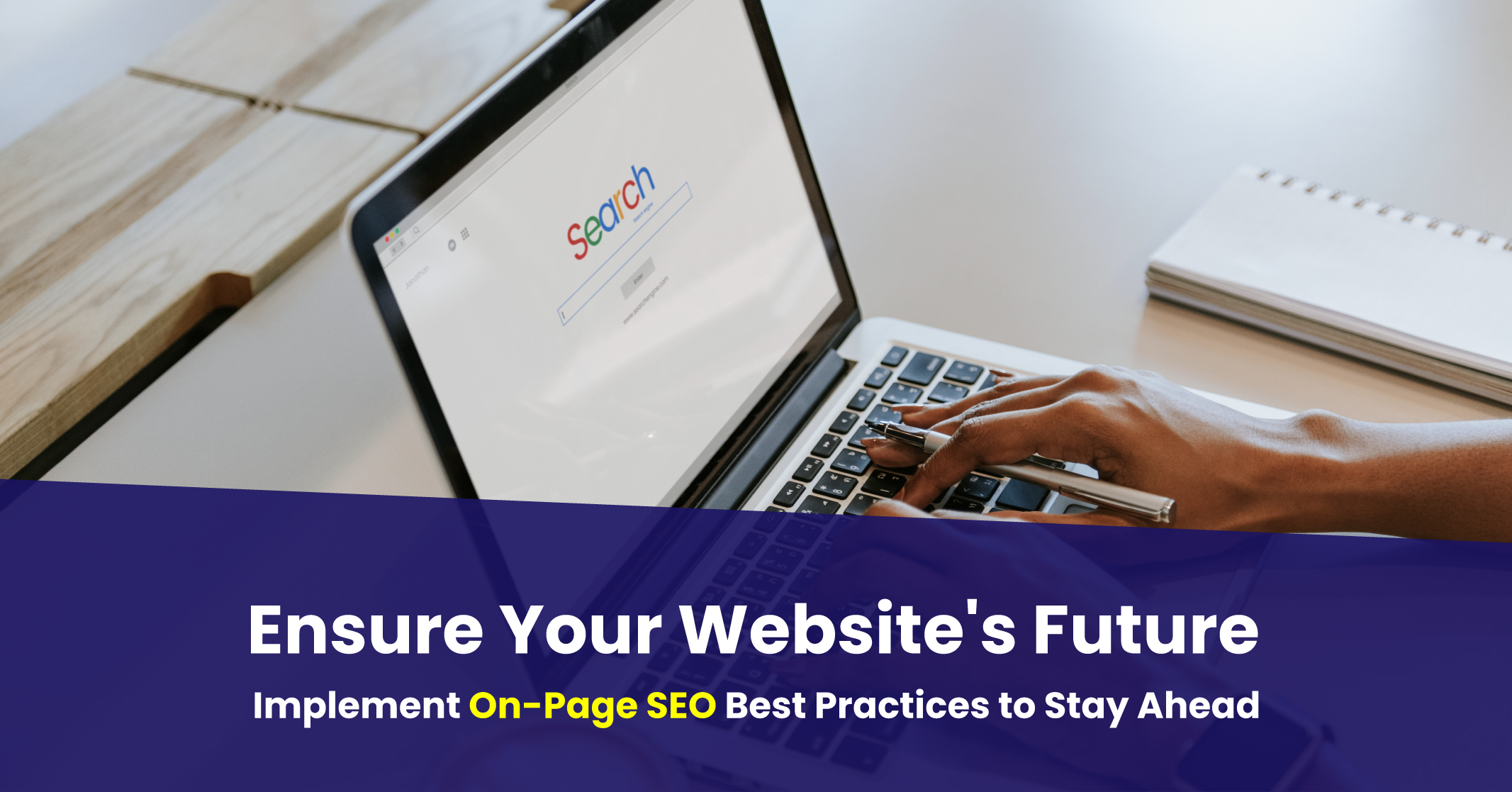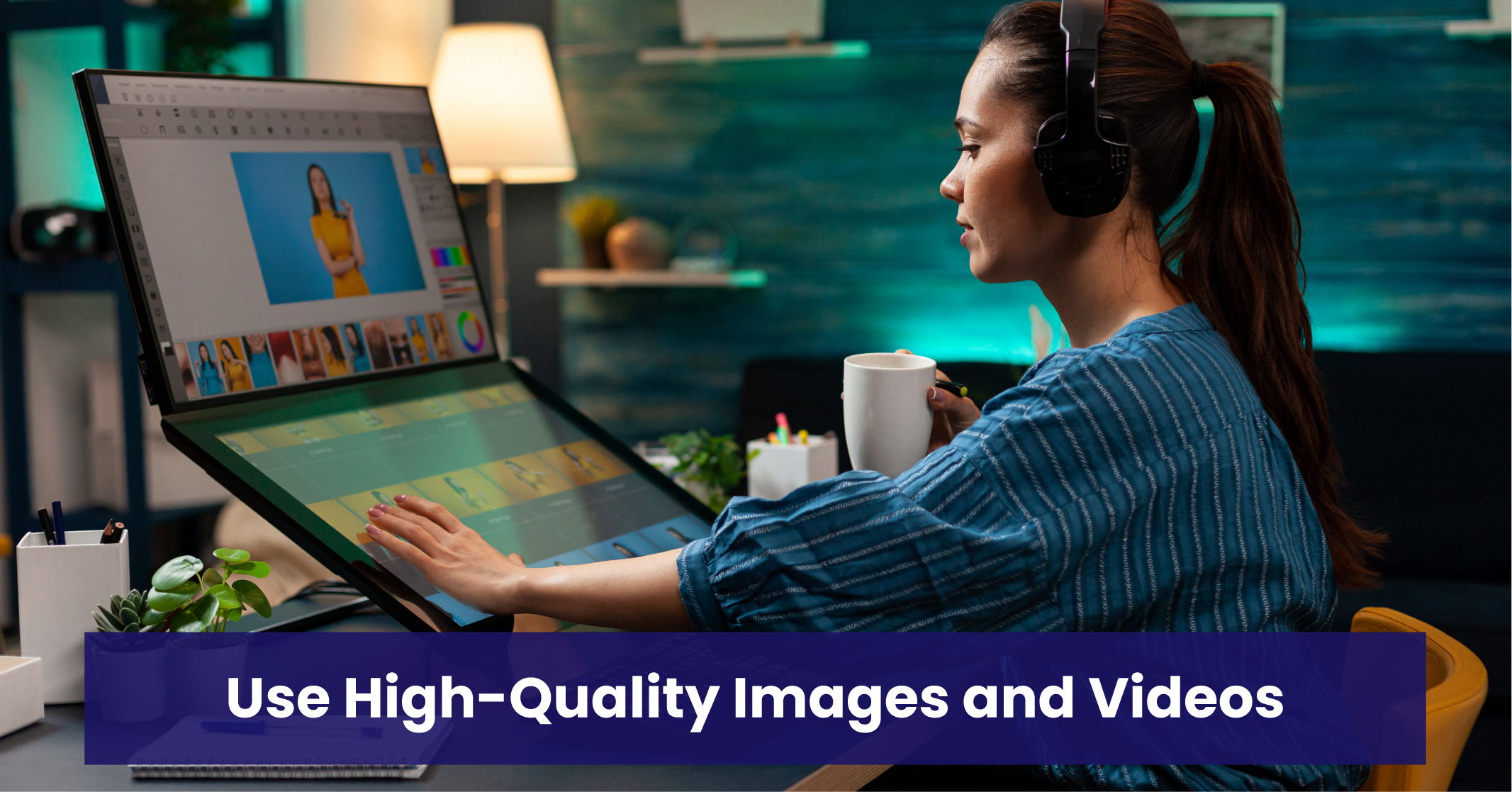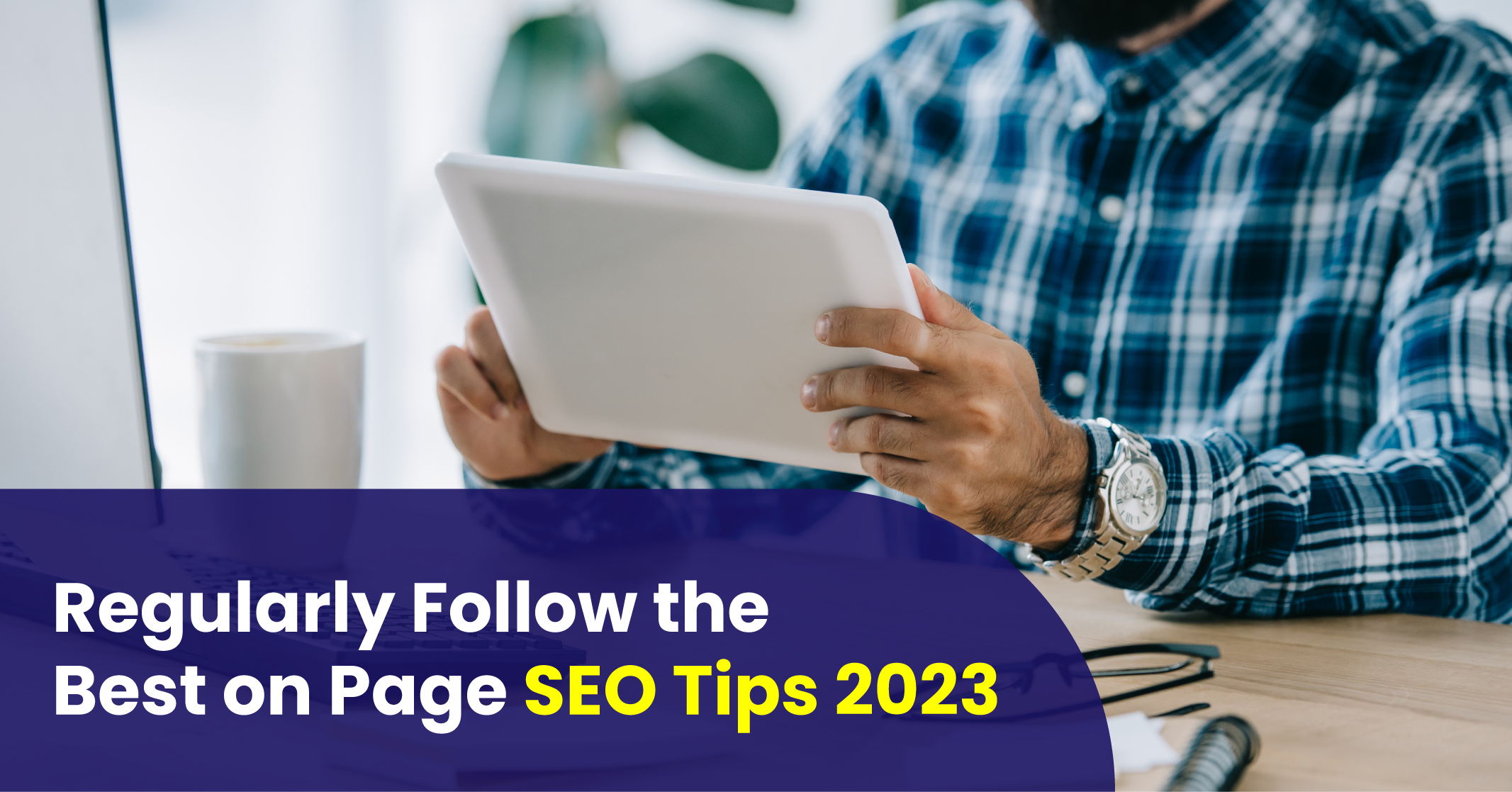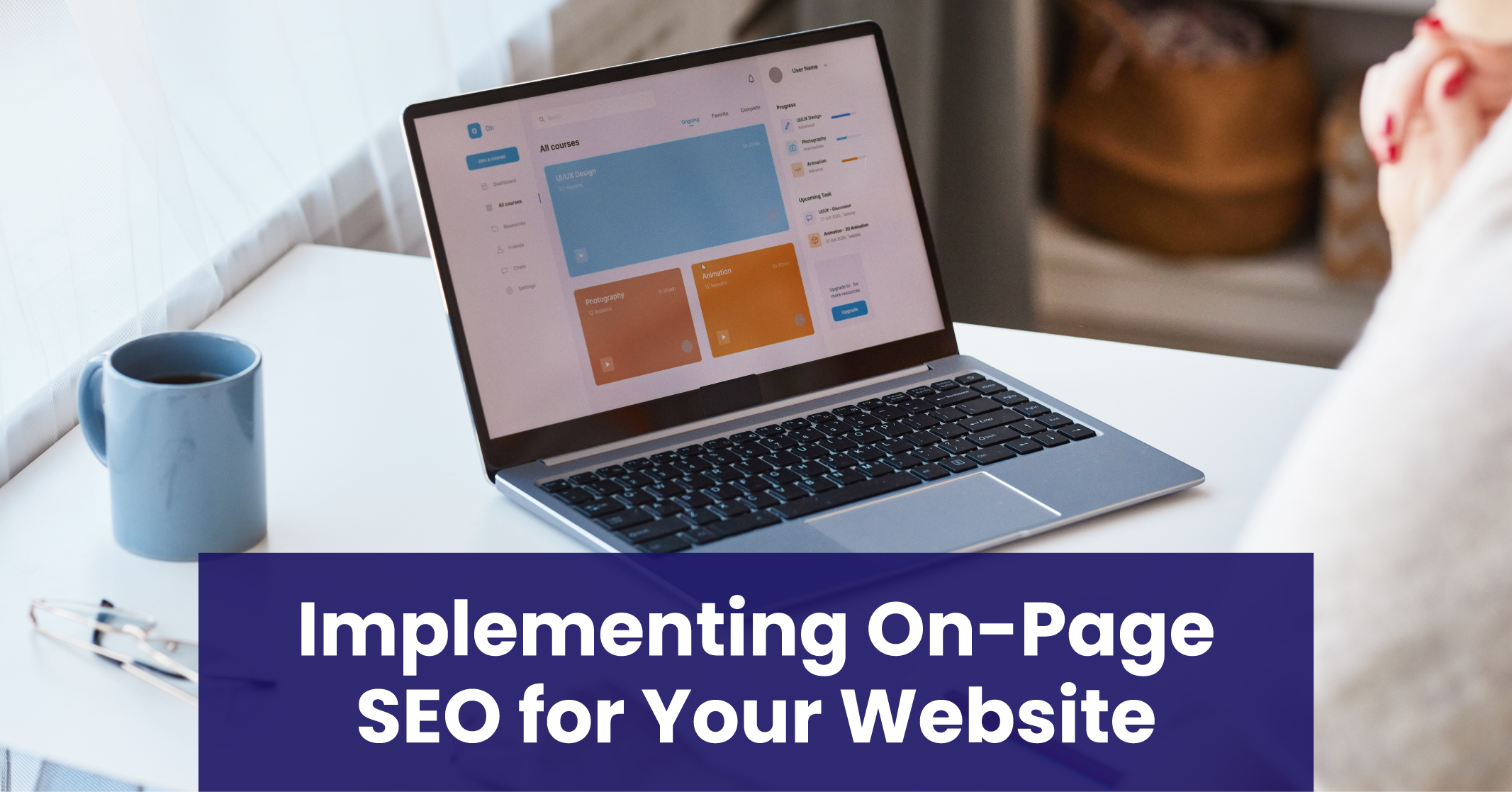I hope you enjoy reading this blog post.
If you want to get more traffic, Contact Us

Click Here - Free 30-Minute Strategy Session
Be quick! FREE spots are almost gone for this Month. Free Quote

As a small business owner, having a strong online presence is crucial for you so that you can easily reach your customers and grow your business. Here On-page SEO approach can help you. It is nothing but the use of high-quality media. The standard of your visual content can significantly impact how your intended audience perceives your products and services.
In 2023, top-notch images, graphics and other cutting-edge media are the on-page SEO tools that can aid you in:

Click Here – Free 30-Minute Strategy Session
Be quick! FREE spots are almost gone for this Month
To achieve these marketing objectives, you can take two straightforward measures to improve your SEO strategy right away:
Want to know how you can enhance your brand’s reputation while getting a higher return on your investment? This blog contains some important information that can help you achieve your business goals.
Still searching for a digital marketing agency in Melbourne? Traffic Radius has a team of marketing experts who are passionate about helping your business grow through effective digital marketing strategies.
Our services include a wide range of digital marketing solutions for:
One of the very first SEO tips is to generate backlinks is crucial to aid search engines in assessing your website’s quality and deciding its SERP ranking. High-quality backlinks can propel your website to the top of Google’s search results.
Why Are They Important?
Backlinks play a significant role in your site’s discoverability as they demonstrate your website’s popularity among users and signify to Google that your content is valuable and worth linking to. They serve as a vote of confidence for your website.
What To Do?
The key to building organic backlinks is creating content that is unique, accurate and up to date than your competitors. High-reputation websites value accurate and unique content and backlinks make it easy to cite statistics, source claims or add context.
By providing relevant and informative content within your niche, you establish your site as authoritative, which generates more inbound links. Infographics are the best content for building organic backlinks, as they are more digestible and shareable, making them 50% easier to read than a full blog.
Tips: To design an infographic, start with a defined audience, determine your infographic style, create a wireframe of your vision and identify your main success metrics.
Learn More: What are Backlinks

Among the many SEO best practices, one is incorporating videos and images into your content strategy. It can help you gain an advantage over your competitors. Visual search is gaining popularity among users who are looking for specific information or products.
Additionally, video search is becoming more prevalent, especially on mobile devices. Social media search is also on the rise, with platforms such as TikTok and YouTube being used to find visual product reviews and tutorials.
What To Do?
Conduct competitive keyword research to understand your target audience’s needs and search intent.
Tips: Focusing on relevant keywords, queries and phrases with high search volume can help you rank better and attract more traffic.
Learn More: Importance of Keyword Research
Implementing best practices for image SEO is crucial to improve your website’s ranking. An image search tool can help you comply with basic SEO standards by using advanced filters such as size and orientation. However, it is equally important to format the images correctly to ensure quality and improve search engine optimization.
What To Do?
There are many tools and resources available to help small businesses with on-page SEO. Some popular tools include Google Analytics, Google Search Console, and SEMrush. These tools can help you track website traffic, monitor your website’s performance, and identify areas for improvement.
In addition to tools, there are also many resources available online. Moz, Search Engine Journal and Search Engine Land are just a few of the many websites that provide valuable information and insights into on-page SEO
Tips: Eliminate image cumulative layout shift (CLS), size your images using the most suitable image file format, compress images appropriately and correctly sequence your image downloads.
For smaller teams, it can be challenging to locate images that are exclusive and have not been previously used by others. However, with the advent of AI-powered image generators, this can now be accomplished. Use apps and websites that utilise creative intelligence to create unique images based on your detailed prompt.
What To Do?
To get started, simply input any noun, verb and artistic style combination. The result could be a unicorn riding a bicycle in a graffiti-style mural.
Tips: Type in your desired image and click generate, then select from a few versions. You can also edit the image in Create or License and download it as is.

Stay up to date with emerging on page SEO trends and keep an eye out for new opportunities to improve your website’s search ranking.
What To Do?
To optimise your short-form video content for SEO, it’s important to consider the platform you’ll be uploading it to and make sure you’re taking advantage of the search algorithm. Here are some tips:
Tips: With platforms like TikTok and Instagram Reels gaining traction. Incorporating short videos into your content strategy can give you a competitive edge.
Improve your return on investment (ROI) with flexible SEO and content creation tools offered online. By signing up for a free trial, you can access an extensive range of tools, templates and AI-powered technology that can help you create engaging content and improve your rankings.
What To Do?
Optimize your images as it can help improve user experience and provide additional context to search engines. Be sure to optimize your images by using descriptive file names and ALT tags.
Tips: Create high-quality, relevant content. This not only helps with on-page SEO but allows you to establish your business as an authority in the industry.
Learn More: Ultimate Guide to SEO Content Creation!
The digital landscape is constantly evolving, and search engine algorithms are becoming more advanced. This means that what worked in the past may not work in the future. Future-proofing your website with on-page SEO best practices ensures that your website remains relevant and visible in search engine results pages (SERPs), regardless of changes in algorithms.
Future-proofing your website by implementing SEO tips for small businesses, ensuring the visibility of your site, and improving the overall user experience.
Measuring and analyzing on-page SEO success is critical for future-proofing your website. By tracking website traffic, engagement and conversions, you can identify areas for improvement and make data-driven decisions to improve your website’s performance.
Google Analytics is a powerful tool for measuring on-page SEO success. It allows you to track website traffic, engagement, and conversions, as well as identify areas for improvement. By regularly reviewing your website’s analytics, you can gain valuable insights.
Learn More: The Complete Beginner’s Guide to Google Analytics

Implementing on-page SEO for your website can seem overwhelming, but it doesn’t have to be. By following the best practices outlined in this article and utilizing the tools and resources available, you can improve your website’s visibility and relevance in search engine results pages.
Start by conducting keyword research and optimizing your website’s content, meta descriptions and title tags. Focus on creating high-quality, relevant content and optimizing your website for mobile devices.
Finally, be sure to regularly review your website’s analytics and make data-driven decisions to improve performance.
Learn More: Ultimate Guide to SEO Content Creation!
On-page SEO is a critical component of search engine optimization that can help small businesses improve their visibility and relevance in search engine results pages. By future-proofing your website with on-page SEO best practices, you can ensure that your website remains visible and relevant, regardless of changes in algorithms.
Implement the best practices outlined in this article, including:
Conduct keyword research: Research and select relevant keywords that your target audience is searching for.Optimize title tags: Make sure your title tags accurately describe the content on the page and include your target keywords.
Meta descriptions: Write compelling meta descriptions that encourage users to click through to your website.
Use header tags: Use header tags to make the content easier to read. Include your target keywords in your header tags.
Optimize your content: Make sure your content is high-quality and relevant to your target audience. Use your target keywords naturally throughout your content.
Use alt tags for images: Include descriptive alt tags for all images on your website to improve accessibility and provide additional context for search engines.
Internal linking: Link to other relevant pages on your website to improve navigation and help search engines understand the structure of your website.
Improve page speed: Optimize your website’s loading speed by compressing images, reducing the use of plugins, and minifying CSS and JavaScript files.
Make your website mobile-friendly: Ensure that your website is optimized for mobile devices to improve user experience and SEO.
Use schema markup: Implement schema markup to help search engines understand the content on your website and improve your visibility.
On-page SEO is important because it helps search engines understand the content of your website and index it correctly. By optimizing your on-page elements, such as your titles, meta descriptions, headers and content, you can signal to search engines what your website is about and what topics you want to rank for.Effective on-page optimization can also improve the user experience for your visitors, as it can make your content easier to read, understand, and navigate. This can lead to longer dwell times and more engagement, which can in turn improve your search engine rankings.
In summary, on-page SEO is critical because it not only helps search engines understand your content but can also improve the user experience and ultimately drive more traffic and leads to your website.
Learn More: 7 Reasons Why Investing in SEO is Crucial for Your Business
Google’s algorithm continues to prioritize user experience, so make sure your website is easy to navigate, loads quickly and provides high-quality content that is relevant to the user’s search intent. Also, it’s crucial to have a website that is optimized for mobile-first indexing.Make sure your website is mobile-friendly and loads quickly on all devices. Use the semantic search by incorporating related keywords and synonyms in your content.

LEAVE A REPLY